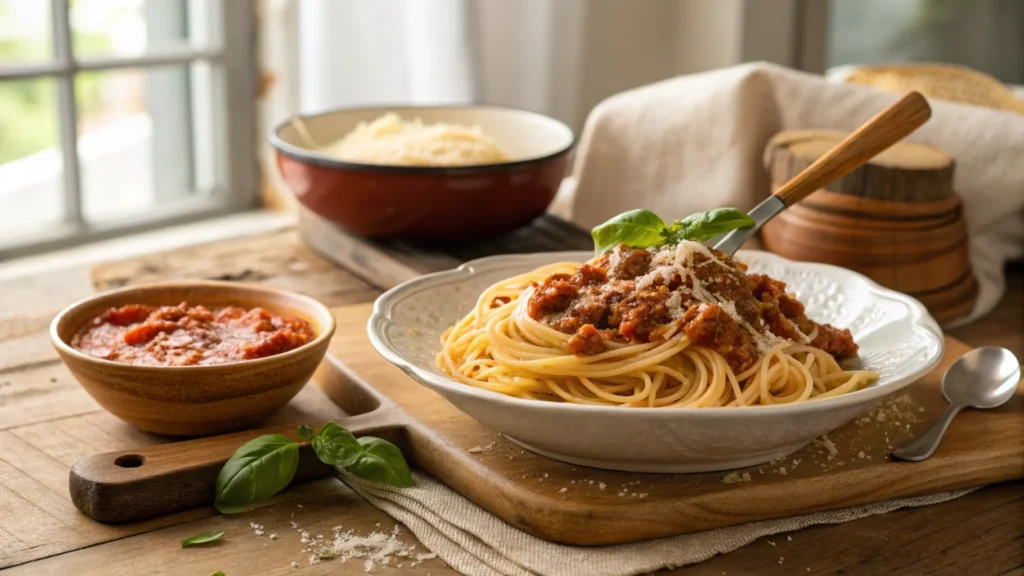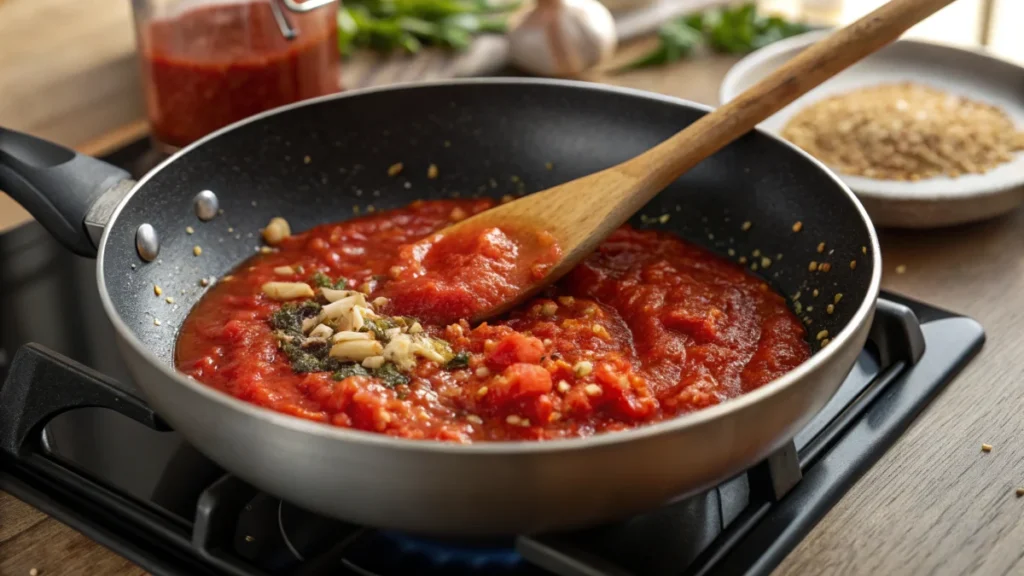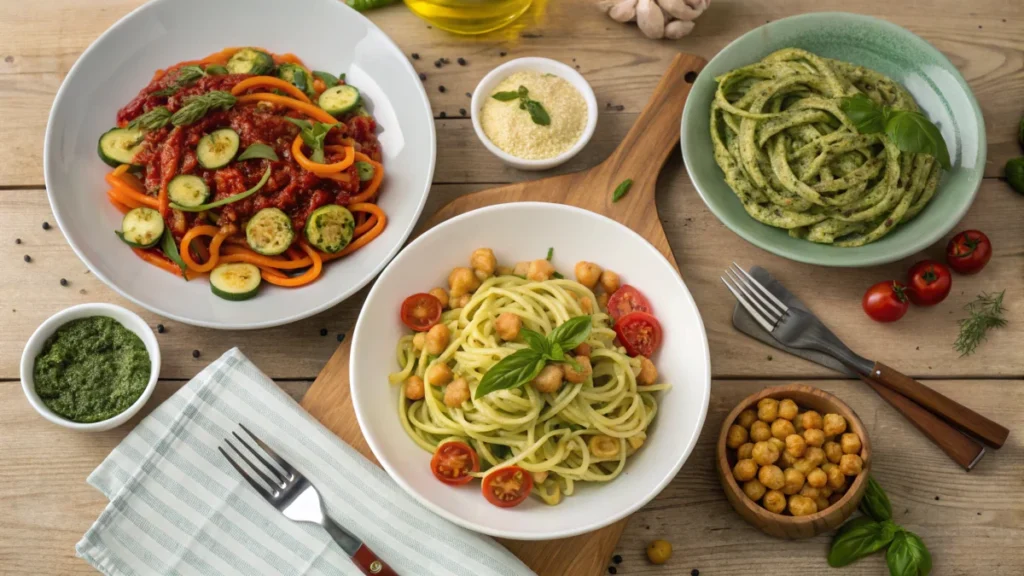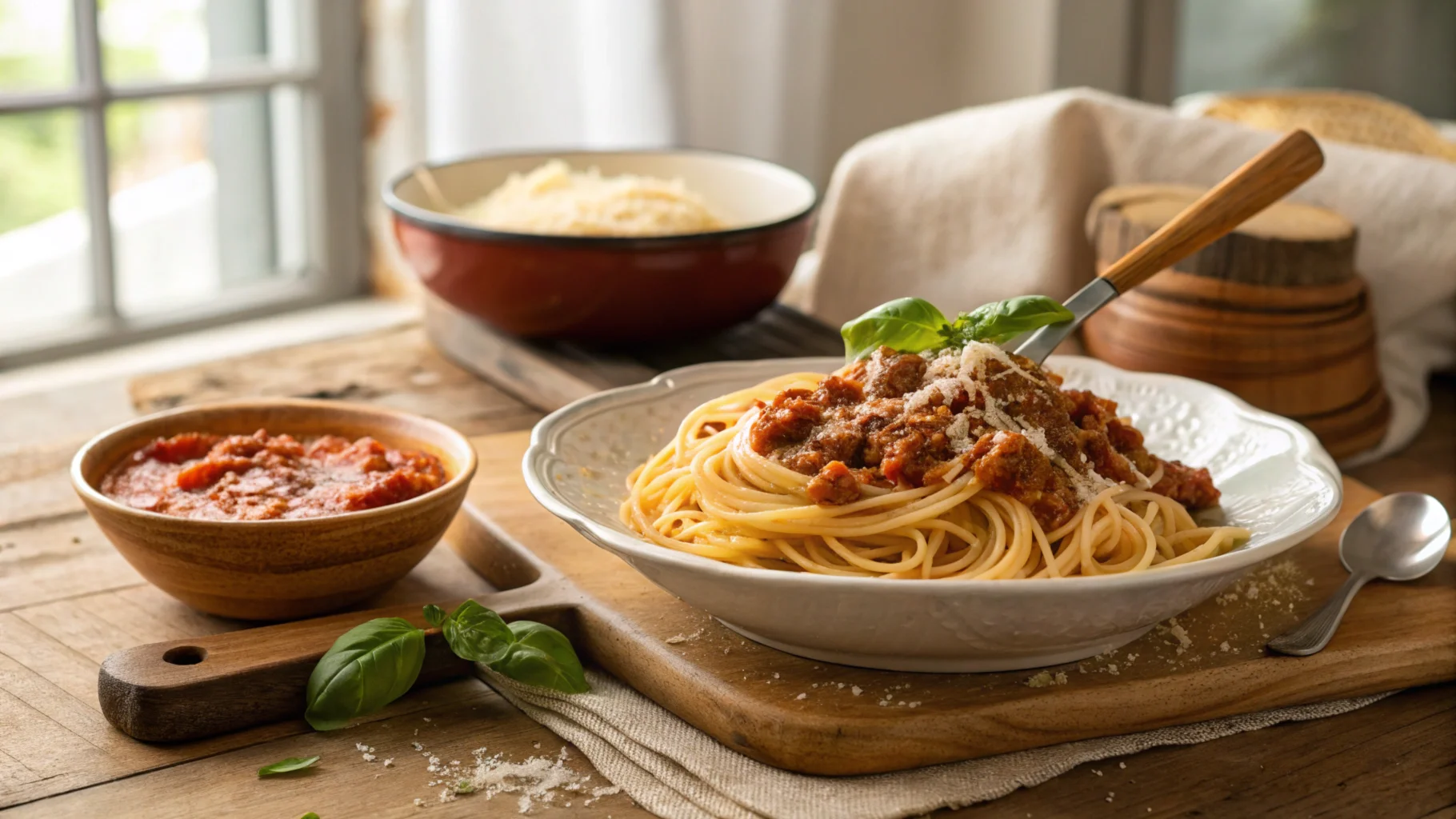Pasta has become a universal favorite, cherished not only for its simplicity but also for its versatility. From traditional Italian recipes to creative interpretations around the globe, there’s something for every palate. Whether you’re a beginner seeking classic dishes or an experienced cook eager to experiment, this guide to the Best Pasta Dish will help you master the art of pasta.
For an extensive dive into pasta techniques and recipes, check out Pasta Recipes: A Comprehensive Guide to Delicious Dishes. This resource offers everything you need to explore pasta’s endless possibilities, from the fundamentals to innovative variations.

Table of Contents
Introduction to the Best Pasta Dish Recipes
Pasta recipes form the foundation of many cuisines, but Italian pasta recipes are arguably the most famous. The beauty of pasta lies in its ability to mold into numerous shapes and sizes, making it the perfect base for a variety of sauces, flavors, and toppings.Furthermore, pasta recipes can be simple and quick or complex and elaborate, depending on the occasion. Consequently, people enjoy pasta dishes worldwide, ranging from family-friendly weeknight meals to gourmet delicacies served in upscale restaurants.
No matter where you’re from, pasta recipes have a way of bringing comfort to your dining table. In fact, the key to making exceptional pasta lies in understanding the ingredients, as well as the cooking techniques. Additionally, pairing pasta with the right sauces is essential for achieving the perfect dish. For example, a simple pasta dish can be transformed by adding a rich, flavorful sauce, which enhances the overall experience. Therefore, it’s important to pay attention to both the pasta itself and its accompaniments. Ultimately, mastering these elements will elevate your pasta-making skills to new heights.
Essential Ingredients for the Best Pasta Dish
Before delving into specific pasta recipes, it’s important to understand the core ingredients needed to make the perfect pasta. While some recipes may call for special ingredients, the basic essentials remain the same.

Key Ingredients for Making Pasta Recipes
- Durum wheat semolina: This high-protein flour is ideal for traditional pasta. It provides texture and firmness, making it perfect for holding sauces.
- Eggs: Essential in many fresh pasta recipes, eggs contribute to the richness and elasticity of the dough.
- Water: Water is typically mixed with flour for making dough, although it may vary depending on the recipe (e.g., egg-free pasta).
- Salt: Used to season both the pasta dough and the boiling water, salt brings out the flavors of the dish.
- Olive oil: Adds flavor and helps to give the dough a silky texture, particularly in Italian pasta recipes.
Additional seasonings, such as garlic, herbs, and cheeses, can further enhance the flavor of your pasta, making it more aromatic and delicious.
Types of Pasta: A Comprehensive Guide
There are hundreds of pasta shapes and varieties, each designed to pair with specific sauces. Therefore, understanding these types helps you choose the best one for your pasta recipes. Additionally, knowing the shape ensures you match it with the right sauce for optimal flavor.
Popular Pasta Shapes and Their Uses
- Spaghetti: A long, thin noodle that pairs well with lighter sauces, such as tomato-based sauces or olive oil and garlic.
- Penne: Tubular pasta that works wonderfully with chunky sauces like Bolognese or vegetable ragu.
- Fusilli: Spiral-shaped pasta that holds onto thicker sauces, including cream-based or pesto sauces.
- Fettuccine: A flat, ribbon-like pasta typically paired with rich, creamy sauces like Alfredo.
- Ravioli: Square or round stuffed pasta that can be filled with a variety of ingredients, such as cheese, spinach, or meat.
Each shape has a specific purpose, so choosing the right one is key to getting the most out of your pasta recipes.
Making Homemade Pasta from Scratch
While store-bought pasta is convenient, making homemade pasta from scratch allows you to enjoy the freshest, most flavorful pasta. Fresh pasta also has a delicate texture that is hard to replicate with dried varieties.
Step-by-Step Guide for Making Homemade Pasta
- Mixing the Dough: Start by combining flour and eggs in a bowl. You can also add a pinch of salt for extra flavor.
- Kneading the Dough: Knead the dough for about 10 minutes until it becomes smooth and elastic. This is the key to achieving that perfect texture.
- Resting the Dough: Allow the dough to rest for 30 minutes, covered with a damp towel or plastic wrap. This helps relax the gluten, making it easier to roll out.
- Rolling and Cutting: Roll the dough into thin sheets and cut into your desired shape—be it fettuccine, pappardelle, or ravioli.
- Cooking: Fresh pasta cooks much faster than dried pasta, so be sure to watch it closely. Usually, 2-4 minutes in boiling salted water is sufficient.
Homemade pasta elevates any pasta recipe, offering a fresh, custom texture that pre-packaged pasta simply can’t match.
Classic Pasta Recipes for Beginners
If you’re just starting with pasta recipes, it’s a good idea to begin with simple, classic dishes that focus on basic flavors. These recipes typically don’t require too many ingredients, yet they are full of flavor and satisfaction.
Easy Classic Pasta Dishes to Try
- Spaghetti Aglio e Olio: Made with just spaghetti, garlic, olive oil, and red pepper flakes, this dish is perfect for a quick, flavorful meal.
- Penne Arrabbiata: This spicy dish uses penne pasta, paired with tomato sauce, garlic, and chili flakes, creating a bold, satisfying flavor.
- Macaroni and Cheese: A timeless American favorite made with elbow macaroni and a creamy cheese sauce.
These classic recipes provide a great foundation for anyone wanting to dive into the world of pasta cooking.
Regional Italian Pasta Dishes
Italy’s regional diversity is reflected in its pasta recipes, with each region creating unique dishes based on local ingredients and traditions. By exploring these regional variations, you’ll not only expand your pasta repertoire but also experience the cultural history behind each dish.
Famous Regional Pasta Dishes
- Lasagna (Emilia-Romagna): A comforting dish made with layers of wide pasta, rich meat sauce, béchamel, and cheese.
- Cacio e Pepe (Lazio): A minimalist pasta made with just spaghetti, Pecorino Romano cheese, and black pepper.
- Orecchiette con Cime di Rapa (Puglia): Orecchiette pasta served with broccoli rabe, garlic, anchovies, and chili flakes.
- Pasta alla Norma (Sicily): A delicious dish with pasta, fried eggplant, tomatoes, and ricotta salata.
These dishes reflect the heart and soul of Italian cooking, with each region’s history and local produce influencing the flavors.
Global Variations of Pasta Recipes
While pasta is most commonly associated with Italian cuisine, it has spread across the globe and taken on various forms and flavors. These global variations showcase how pasta has been adapted by different cultures to suit their own unique tastes.
International Pasta Dishes
- Chow Mein (China): Stir-fried noodles served with vegetables and meat or tofu, often flavored with soy sauce and sesame oil.
- Japchae (Korea): Sweet potato starch noodles stir-fried with vegetables, beef, and a sweet-savory sauce.
- Spaghetti Bolognese (Australia): Although originating in Italy, the Australian version of this dish uses spaghetti instead of traditional tagliatelle.
These global pasta variations show just how versatile this ingredient can be, transcending its Italian roots to become a staple in many world cuisines.
Vegetarian and Vegan Pasta Recipes
Vegetarian and vegan pasta recipes offer a fantastic way to incorporate more plant-based meals into your diet. In fact, many traditional pasta dishes can easily be adapted to suit vegetarian or vegan preferences. As a result, you can enjoy rich, flavorful meals without compromising on taste.
Delicious Vegetarian and Vegan Pasta Recipes
- Pasta Primavera: This vibrant dish combines pasta with a variety of sautéed vegetables, creating a light and healthy meal.
- Vegan Pasta Alfredo: A plant-based version of the classic Alfredo sauce, made with cashews or coconut milk to create a rich, creamy texture.
- Lentil Bolognese: Replace meat with lentils in this vegan version of the classic Bolognese sauce, resulting in a hearty, protein-packed dish.
With fresh vegetables, legumes, and plant-based alternatives, these pasta recipes are both nutritious and flavorful.

Gluten-Free Pasta Options
For those with gluten sensitivities, gluten-free pasta recipes offer a delicious alternative to traditional pasta. With a wide range of gluten-free options available, it’s easier than ever to create tasty and satisfying dishes without gluten.
Types of Gluten-Free Pasta
- Rice-based pasta: A popular choice for making gluten-free spaghetti and penne.
- Chickpea pasta: Made from chickpea flour, this pasta is a high-protein, fiber-rich alternative to traditional pasta.
- Corn pasta: A smooth, versatile gluten-free option commonly used in lasagna and mac and cheese recipes.
Although gluten-free pasta has a different texture than traditional pasta, it can still be used in a variety of dishes to create a delicious experience for those avoiding gluten.
Sauces That Elevate Your Pasta
The right sauce can elevate even the simplest pasta dish into something extraordinary. From classic tomato sauces to rich, creamy sauces, the possibilities are endless.
Popular Pasta Sauces
- Marinara: A simple, tomato-based sauce with garlic, olive oil, and herbs, perfect for a quick pasta meal.
- Pesto: A sauce made from basil, pine nuts, garlic, and Parmesan, blended with olive oil.
- Alfredo Sauce: A creamy sauce made with butter, heavy cream, and Parmesan cheese.
- Bolognese: A meat-based sauce, typically made with beef, pork, tomatoes, and Italian herbs.
Each sauce adds a unique flavor profile to your pasta recipes, so experimenting with different combinations will help you find your favorite.
Tips for Cooking Pasta Perfectly
To ensure that your pasta turns out perfectly every time, there are a few essential tips to follow. Proper cooking techniques are key to making sure your pasta is neither undercooked nor overcooked.
Cooking Tips for Perfect Pasta
- Use plenty of water: Make sure there’s enough water in the pot for the pasta to cook evenly.
- Add salt to the water: Salting the water enhances the flavor of the pasta.
- Cook al dente: Pasta should be firm to the bite but not too hard.
- Reserve pasta water: Save a cup of cooking water to add to your sauce, which helps thicken it and bind the sauce to the pasta.
These small yet crucial tips will ensure that your pasta recipes turn out perfectly every time.
FAQs:
Which is the Best Pasta Dish in the World?
The title of the “best pasta dish” is subjective, but Spaghetti Bolognese and Lasagna are often top contenders globally due to their rich, comforting flavors. Pasta alla Carbonara is also a fan favorite for its creamy, egg-based sauce and pancetta.
What is Italy’s Favorite Pasta Dish?
Spaghetti Aglio e Olio is considered Italy’s favorite pasta dish. It’s a simple combination of spaghetti, garlic, olive oil, and chili flakes. Pasta alla Carbonara also ranks highly, especially in Rome.
What is the Most Eaten Italian Pasta?
Spaghetti is the most eaten pasta in Italy and worldwide. Its versatility and ability to pair with various sauces make it a go-to choice in Italian cuisine.
What is the Rarest Pasta Dish?
The rarest pasta dish is Cappelletti, small, stuffed pasta often filled with meat or cheese. It’s typically reserved for special occasions in regions like Emilia-Romagna and Marche.
Conclusion
Pasta recipes are among the most versatile and universally loved dishes worldwide. By mastering the essential ingredients, various pasta types, and cooking techniques, you can create an array of dishes that fit any occasion. Whether you’re preparing a classic Italian favorite or a creative adaptation inspired by global cuisines, pasta opens up a world of culinary opportunities.
For those who enjoy planning ahead for special meals, you might also be interested in learning how to prepare other sophisticated dishes. Discover helpful tips in Can I prep Beef Wellington the night before?. This guide offers practical advice on meal preparation for impressive and stress-free dining.

